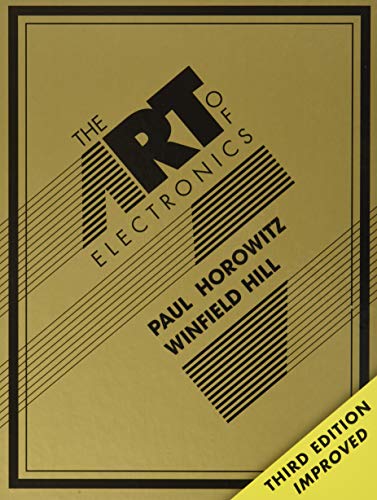If you’re embarking on a journey through the intriguing world of electronic circuits, then look no further than the highly acclaimed book, ‘The Art of Electronics’ published by Cambridge University Press. With its latest edition hitting the shelves on March 30, 2015, this hardback masterpiece is not just a textbook; it’s a comprehensive resource that transforms the complex subject of electronic circuit design into an accessible and engaging learning experience. Whether you’re a student, educator, or a seasoned professional in the field, this book has something to offer everyone. In this review, we’ll explore the features, advantages, and overall value of this indispensable reference manual, which has cemented itself as a gold standard in the electronics community.
As an Amazon Associate, We earn from qualifying purchases.
Discover the Art of Electronics

Pros
- Thoroughly revised and updated, reflecting the latest developments in electronic circuit design.
- Widely recognized as the authoritative text, making it an invaluable resource for both students and professionals.
- The hardback format enhances durability, making it suitable for frequent reference and long-term use.
Cons
- The book may be too technical for beginners, requiring prior knowledge of electronics to fully understand the content.
- Its hardback format can make it less portable compared to paperback or digital versions, which may inconvenience some readers.
- At a potentially high price point, it may not be accessible for all students or hobbyists interested in learning about electronics.
How does it work?
Cambridge’s *The Art of Electronics* operates as the definitive guide for electronic circuit design by blending rigorous theoretical concepts with practical applications. The book is structured to provide a comprehensive foundation in electronics, making it accessible for both novice learners and seasoned professionals.
Once you dive into the chapters, you will encounter a rich array of topics, starting from the fundamentals of electronic components, such as resistors, capacitors, and transistors, to more complex subjects like operational amplifiers and oscillators. Each section is filled with clear explanations, diagrams, and examples, illustrating how these components interact within a circuit.
The revised third edition benefits from insights gained since the previous editions, reflecting changes and advancements in technology. It incorporates updated examples that include modern components and tools, making the learning experience relevant and timely. In addition to in-depth theoretical discussions, this book emphasizes practical design techniques and problem-solving strategies.
For hands-on learners, the text includes numerous laboratory exercises and design projects, allowing readers to apply theoretical knowledge directly to real-world scenarios. This engaging approach not only enhances understanding but also builds confidence in designing and troubleshooting electronic circuits.
Overall, with its comprehensive coverage and well-organized structure, *The Art of Electronics* serves as an essential resource, catering to all levels of electronic design enthusiasts. Whether you’re a student in electronics, an engineer looking to refresh your skills, or simply someone curious about circuit design, this book will guide you through the intricate world of electronics with clarity and expertise.

Who is it for?
The Art of Electronics is ideal for students, educators, engineers, hobbyists, and anyone seeking a comprehensive understanding of electronic circuit design.
Unlock the Secrets of Electronics

In summary, the third edition of ‘The Art of Electronics’ by Cambridge is more than just a textbook; it’s a masterclass in electronic circuit design. Whether you are a novice or a seasoned professional, this book offers invaluable insights that will enhance your understanding and skills in electronics. The combination of thorough explanations, practical examples, and a wealth of new content makes it a must-have resource for anyone serious about mastering the art of electronics. Don’t miss out on the opportunity to elevate your knowledge and expertise—grab your copy today!


